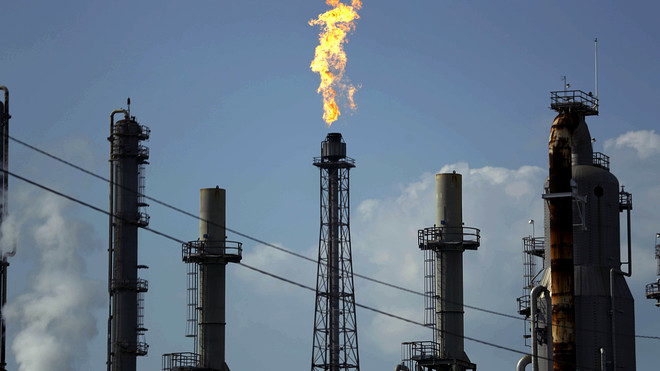The United States energy industry saw an arrested slowdown in second quarter, Federal Reserve Bank of Texas said on Wednesday, quoting top-ranking oil workers that responded to its energy survey
The survey’s most expansive indicator of the economic health of Eleventh District (a region comprising Texas, northern Louisiana and southern New Mexico) energy firms – the business activity index – was not favourable even though at -6.6, it bettered the preceding quarter’s figure of -66.1, meaning that the degree of contraction had eased substantially.
Production declines were modest, with expansion in production indexes which were negative regardless.
The oil production index climbed from -62.6 in the second quarter to -15.4 this quarter, exploration and production (E&P) professionals said. The natural gas production lifted by 38 points to -10.1.
The E&P companies’ capital expenditures index scaled up to -16.4 up from -66.1, an omen of fall in the intensity of decrease in capital outlay. By implication, spending is reducing. Yet, not at the same rate it did in the past.
Oilfield services companies saw the index for their capex leap from -73.5 to -35.1.
Oilfield services firms’ conditions worsened but at a measured pace. The index for equipment use leapt by 50 points to -18.9, reflecting that utilisation dropped but at a much slower rate.
Also Read: New Wave of Coronavirus Infections Threatens Oil Price Recovery and Nigeria’s Economy
The operating margins index jumped from 68.6 to -30.8. The Index of the prices received for service was similarly negative although it advanced from -64.7 to -26.4. Fall in inputs costs was a succour to companies. The index was -9.5 in this quarter.
“Labor-related indicators fell again, but at a more modest pace than last quarter. The aggregate employment index posted a sixth consecutive negative reading but moved up from -46.1 to -18.1.
“Additionally, the index of aggregate employee hours worked increased from -47.0 to -15.3. The index for aggregate wages and benefits remained in negative territory but rose from -41.7 to -19.4” Federal Reserve Bank of Dallas said.
Outlook index for companies came back to the positive territory in the third quarter at1.9.
The outlook was relatively flat given the near-zero reading.
Lower number of firms observed growing uncertainty this quarter than last. The aggregate uncertainty index toppled to 19 points to 17.2.
Respondents on average anticipate a West Texas Intermediate (WTI) oil price of $43.27 per barrel by end of the year. With responses vrying form $30 to $60 per barrel by end of 2020. They believe Henry Hub natural gas will be $2.55 per million British Terminal units (MMBtu) at the end of 2020.

